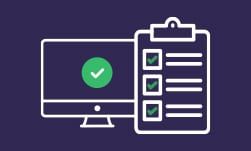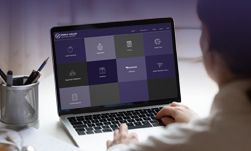
Did you know 89% of students say field trips have a lasting, positive impact on their education and career? Planning the perfect trip takes more than enthusiasm; it takes organization. That’s where our field trip checklist template comes in.
This free resource helps teachers, chaperones and students stay on track with a customizable list you can fill with key tasks, supplies and safety tips. Use our expert advice to make every kid's adventure safe, smooth, and memorable. Download your free field trip templates and start planning today!
Table of Contents
- FREE and Editable Field Trip Checklist Templates
- More FREE Field Trip Templates and Tools
- What to Do After the Field Trip?
- How to Automate and Manage Field Trip Registrations Online
- FAQs
Free and Editable Field Trip Checklist Templates
It takes a lot to of effort from all sorts of people in different roles to pull off a successful field trip. That's why we broke down preparation steps and details within the following checklists, grouping them by role.
Field Trip Checklist for Teachers
6-8 Weeks Before Trip (Initial Planning)
- Obtain administrative approval for field trip
- Book venue/destination and confirm availability
- Arrange transportation (bus requisition submitted)
- Calculate costs and establish budget
- Develop learning objectives and curriculum connections
- Complete risk assessment form
4-6 Weeks Before Trip (Communication & Preparation)
- Send initial parent notification letter
- Distribute permission slips (set due date: _______)
- Recruit and confirm chaperones
- Required ratio: ___ students per adult
- Identify students with special needs/accommodations
- Arrange lunch plans (school provided / bring own / purchase)
- Arrange substitute teacher if needed
2-3 Weeks Before Trip (Final Preparations)
- Collect all permission slips and money
- Confirm final student count with venue
- Review medical forms and allergy information
- Compile emergency contact list
- Meet with chaperones to review expectations
- Assign students to chaperone groups
- Prepare name tags/identification for students
1 Week Before Trip (Final Details)
- Send reminder notice home with details
- Confirm transportation arrangements
- Call venue to confirm reservation and arrival time
- Prepare educational materials/worksheets
- Arrange first aid kit and medications with nurse
- Review field trip behavior expectations with students
- Provide office with list of attending students
Day of Trip - Morning (Before Departure)
- Take attendance and confirm all students present
- Notify office of absent students
- Collect medications from nurse
- Pack emergency folder (contacts, medical info, permission slips)
- Bring first aid kit
- Ensure cell phone is charged and has school contact numbers
- Distribute name tags and group assignments
- Last bathroom break before boarding
Day of Trip - During (On Location)
- Conduct headcount upon arrival
- Check in at venue and confirm schedule
- Establish and communicate meeting spots/times
- Review behavior expectations and safety rules
- Implement buddy system if applicable
- Conduct regular headcounts throughout visit
- Supervise lunch period
Critical Items (Do Not Forget!)
- ALL permission slips collected
- Medical information for all students
- Emergency contact numbers
- Student medications (EpiPens, inhalers, etc.)
- School office contact information
- Final headcount before departure from venue
Post-Trip (Follow-Up)
- Return medications to nurse
- Complete any incident reports if necessary
- Send thank you notes to venue and chaperones
- Follow-up activities/assignments with students
- Complete trip evaluation for future reference
- Submit receipts/financial documentation
Field Trip Chaperone Checklist
Before the Trip
- Complete required background check/volunteer paperwork
- Attend pre-trip meeting or review instructions with teacher
- Receive list of students in your group
- Note any special needs/medical conditions for your group
- Exchange phone numbers with lead teacher
- Confirm appropriate dress code and wear comfortable shoes
What to Bring
- Fully charged cell phone
- Emergency contact information (provided below)
- Your assigned student list
- Water bottle
- Lunch/snacks (if needed)
- Any supplies requested by teacher (clipboard, pen, etc.)
- Positive attitude and patience!
Your Responsibilities
- Maintain constant supervision of assigned students
- Never leave students unattended
- Take frequent headcounts of your group
- Count before moving to any new location
- Keep your group together at all times
- Accompany students to restrooms (wait outside)
- Use buddy system – never let a student go alone
- Help enforce school behavior expectations
- Report any incidents or concerns to lead teacher immediately
- Model appropriate behavior and language
- Engage with students and support their learning
Safety Protocols
- Know which students have medical conditions/allergies
- Do NOT administer medication (refer to teacher/nurse)
- Know designated meeting points and times
- Understand emergency procedures
- Keep students away from strangers
- Report any injuries immediately to lead teacher
- Enforce bus safety rules (remain seated, indoor voices)
Important DO NOTs
- Do NOT give students medication of any kind
- Do NOT leave your group unsupervised
- Do NOT allow students to leave with anyone other than authorized persons
- Do NOT purchase items for specific students (treats for all or none)
- Do NOT share personal contact information with students
- Do NOT post photos of students on social media
- Do NOT transport students in personal vehicles
- Do NOT discipline students physically – report issues to teacher
Helpful Tips
- Learn students' names quickly – it helps with management
- Set clear expectations at the beginning
- Use positive reinforcement and encouragement
- Stay calm and patient – field trips can be exciting for students
- Ask questions to engage students in learning
- Take mental notes of interesting moments to share with teacher/parents
- Have fun while maintaining structure!
Field Trip Checklist for Students
Night Before Checklist
- Put signed permission slip in backpack
- Put field trip money in envelope (if needed)
- Set out comfortable clothes and walking shoes
- Pack lunch in disposable bag (if bringing)
- Fill water bottle
- Any supplies teacher requested
- A positive attitude and big smile!
Tip: Put everything by the door so you don't forget in the morning!
Morning of the Trip
- Eat a good breakfast
- Wear comfortable clothes and closed-toe shoes
- Use the bathroom before leaving school
- Listen to teacher's instructions
- Find your buddy or group
What to Bring
- Water bottle (labeled with name)
- Lunch/snacks in disposable bag
- Jacket or sweater (check weather!)
What Not to Bring
- Electronic devices (unless teacher says OK)
- Toys or games
- Extra money (only bring what's needed)
- Candy or gum
- Anything valuable that could get lost
- Bad attitudes!
Important Field Trip Rules
- Stay with your group and chaperone at ALL times
- Listen to teachers and chaperones
- Follow bus rules – stay seated and use indoor voice
- Be respectful to everyone and everything
- Ask before going anywhere (even bathroom!)
- Remember: You represent our school!
Remember
- Field trips are special privileges!
- Have fun, be safe, and learn something new!
For Parents
Please help your child:
- Pack everything the night before
- Get a good night’s sleep
- Eat breakfast before school
- Dress appropriately for the weather
- Bring only necessary items
Emergency Contact: __________
Field Trip Safety Checklist
Pre-Trip Safety Planning
- Risk assessment completed for destination
- Pre-visit site inspection conducted (if applicable)
- Travel route planned with alternative routes identified
- Weather conditions checked and contingency plans made
- Safety briefing prepared for students and chaperones
- Insurance coverage verified
- All permission slips collected and verified
Medical & Health Safety
- All student medical forms reviewed
- Allergy list compiled and shared with all adults
- Includes: food allergies, insect stings, medications
- All necessary medications collected and labeled
- EpiPens: ___ | Inhalers: ___ | Other: ___
- First aid kit(s) prepared and checked
- Staff with first aid/CPR training identified
- Special needs accommodations arranged
- Nearest hospital/urgent care located and mapped
Transportation Safety
- Driver qualifications and license verified
- Vehicle safety inspection current
- Seatbelt check for all passengers
- Bus seating chart prepared
- Bus safety rules reviewed with students
- Emergency exits identified and explained
- Vehicle breakdown procedure established
Supervision & Accountability
- Adult-to-student ratio meets or exceeds requirements
- Students assigned to specific adult supervisors
- Attendance/headcount system established
- Count frequency: Every ___ minutes / at each location change
- Buddy system implemented
- Student identification method prepared (tags, shirts, etc.)
- All chaperones briefed on responsibilities
- Communication system between adults established
Emergency Procedures
- Written emergency action plan prepared
- Evacuation procedures identified for venue
- Emergency meeting points established
- Lost student protocol established and communicated
- Injury/illness response protocol reviewed
- Incident report forms available
- All emergency contact numbers verified and distributed
Day of Trip – Final Safety Checks
- Final student count matches registration
- Emergency folder complete (permissions, medical info, contacts)
- Cell phones charged and numbers confirmed
- Weather conditions checked – trip is safe to proceed
- Students briefed on safety rules and expectations
- Departure headcount completed and recorded: __________
Specific Risk Considerations
Check all that apply:
- Water activities/proximity to water
- Outdoor activities (weather, terrain, wildlife)
- Large crowds/public venues
- Animal interactions
- Special equipment/tools usage
- Food preparation/handling
- Additional risk factors and mitigation strategies: __________
More Free Field Trip Templates and Tools
Managing a field trip can quickly become a full-time job, which is why we created something to help. A completely free toolkit that turns stress into structure:
- Ready-to-use permission slip—just print and go
- Letter templates so you don’t have to write a thing
- A reflection worksheet for students
- A clean, editable registration form
- A video on four innovative ways to fund your next field trip
- A step-by-step guide to help you use digital registration software with ease
- And more!
What to Do After the Field Trip?

Write a post-trip report or incident log
After the field trip, it's essential for the teacher to write a post-trip report. This report should record the day's events, noting both the successes and any challenges encountered. It's also a good idea to document any incidents that may have occurred, such as minor injuries or lost items. This report can help improve future field trip planning and procedures.
How Can Schools Involve Students in Reflecting on What They Learned?
Schools can involve students in reflecting on their field trip experience in many educational ways. Teachers can ask students to write a note about what they learned or enjoyed most. In fact, we built a reflection worksheet template you can use to spur deeper contemplation on the event. This reflection is an important part of making the field trip a valuable learning opportunity. Encourage them to carry a notebook to write down their thoughts during the field trip.
Thank Chaperones, Vendors, and Staff Who Made It Possible
It's important to show appreciation to the chaperones, vendor and school staff who helped make the field trip possible. A simple thank-you note can go a long way in acknowledging their help and support. Expressing gratitude helps build positive relationships and encourages them to help with future field trips. The school year will be better thanks to them. You may need their help again.
Return Unused Funds or Receipts to the School Office
After the field trip, return any unused funds and receipts to the school office. This ensures transparency and accountability in managing school resources. Keeping accurate records of expenses is crucial for maintaining trust and following school policy. Make sure that everything is accounted for to avoid any confusion. Always check the school’s procedure before returning anything.
How to Automate and Manage Field Trip Registrations Online

Coordinating field trip logistics doesn’t have to be a paperwork nightmare. With tools like RevTrak’s school registration system, schools can fully automate the process, from collecting student details and signed permission slips to managing and accepting payments online.
Parents can conveniently send their child’s information and choose a payment option. Teachers can quickly organize by class, sort by name, and ensure every student is safe and comfortable for the trip. It’s streamlined, secure and stress-free.
FAQs
What essential information should schools communicate to parents before a field trip?
Before a field trip, schools should communicate the trip's date and time, destination, purpose, transportation details, cost, required permissions, meal arrangements and any necessary items students should bring. Additionally, inform parents about safety measures and contact information for emergencies. If you need help drafting these communications, we have a complete Field Trip Letter Template Guide.
How early should we begin planning the field trip?
It's wise to start planning your field trip well in advance to ensure a smooth and educational experience for the kids. Begin at least a few months before your intended date. This allows ample time to secure the location, arrange transportation like a bus, gather necessary permission slips from parents, and prepare students for the fun day ahead.
What forms or permissions do schools need from parents or guardians?
Before a field trip, schools need to collect forms and permissions from parents or guardians. These forms are vital for student safety and accountability. Key information gathered through these forms is summarized below:
| Form Section | Information Collected |
|---|---|
| Field Trip Details | Purpose, Location, Date, Activities |
| Student Information | Emergency Contact, Allergy Information, Medication Needs |
Having this information ensures student safety and helps keep track of their whereabouts during the field trip.
How do schools estimate total costs and create a budget?
Estimating total costs for a field trip involves a careful assessment of various expenses. Here's a breakdown of some key cost categories:
| Cost Category | Examples |
|---|---|
| Transportation | Bus rentals, train tickets |
| Entrance Fees | Museum, zoo, educational site |
Don't forget to factor in the cost of lunch or snacks for students and chaperones. It is advisable to include a buffer for unexpected expenses to ensure that you are ready.
Do schools need to collect student medical information or emergency contacts?
Collecting student medical information and emergency contact information is an essential part of the field trip preparation process. Teachers and chaperones need to be aware of any allergies, medications, or health conditions that students may have. This information is crucial for ensuring the safety and well-being of each student during the trip.
What rules and expectations for the field trip should be communicated in advance to students and parents?
Before the field trip, clearly communicate the rules and expectations to students and parents. Remind students to stay with their assigned groups and follow the instructions of teachers and chaperones.
| Topic | Details |
|---|---|
| Behavior | Acceptable behavior and following the instructions of teachers/chaperones. |
| Dress Code | Specific dress code requirements for the location. |
| Packing | Items students should or should not pack. |















